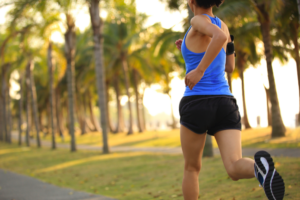Exercise
- Exercise and movement can help to improve the lymph flow and to maintain mobility – seek the advice of your physiotherapist or GP for some specific exercises.
- Point and flex your ankle or wrist, which helps to pump the fluid out of the effected limb.
- Water-based exercises are often easier and provide compression through the water pressure as well (make sure you don’t have any open wounds on your affected limb to avoid infections).
- Deep abdominal Breathing: helps to improve lymph flow as the biggest lymph vessels are based in our abdominal area.
Physiotherapy
- Manual lymphatic drainage (MLD): a special massage technique to reduce swelling combined with compression garments to maintain the reduction of the swelling.
- Elevation: place your effected limb up on a cushion or blankets so that it is at a higher level than your heart.
Self-Care
- Self-massage: massage of lymph nodes and effleurage can help to reduce the swelling. Ask your therapist to teach you a simplified form of MLD.
- Maintain a healthy body weight.
- Moisturize your skin regularly.
Things to avoid
- Avoid wounds or cuts e.g. use gloves when gardening and be careful with pedicure’s and manicure’s, avoid injections on the affected limb, avoid mosquito bites by using repellent.
- Avoid tight clothing or jewellery which may cut into the skin; e.g. tight socks or bra straps.
- Avoid excessive heat, sun, sauna, hot tubs etc.
- Avoid long flights and/or take precautions (wear compression garments, move around and drink lots of water).


